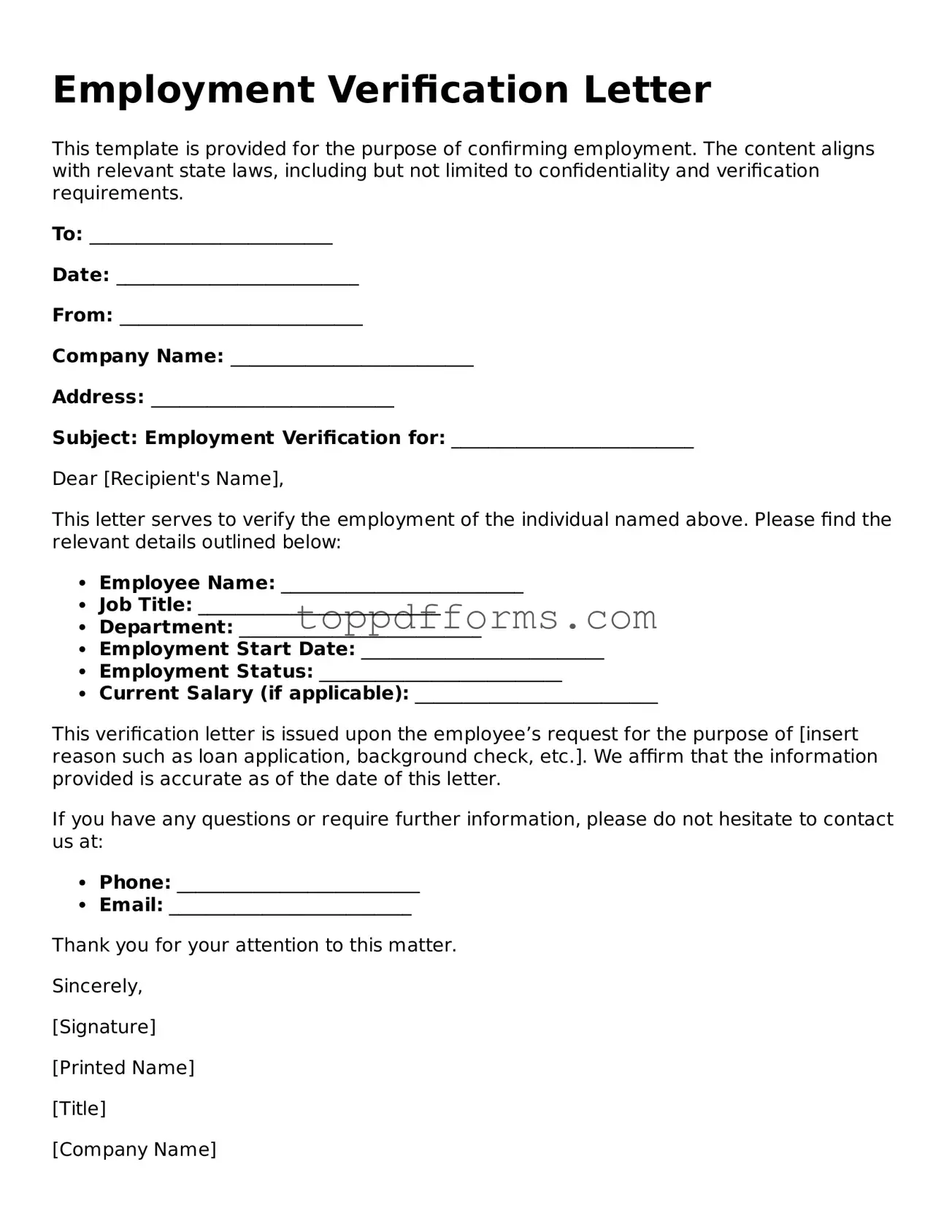Filling out an Employment Verification form can be a straightforward process, but individuals often make common mistakes that can lead to delays or issues in processing. One frequent error is providing incorrect or outdated information about employment dates. It is crucial to verify the start and end dates of employment, as discrepancies can raise red flags for potential employers.
Another common mistake is failing to include the correct job title. The job title should accurately reflect the position held at the time of employment. If the title has changed since leaving the company, it is important to specify the title that was held during the employment period in question.
People often neglect to provide complete contact information for their previous employer. This includes not only the name of the company but also the address and phone number. Incomplete information can hinder the verification process, as prospective employers may struggle to reach the appropriate contacts.
Some individuals may forget to sign and date the form. A signature is often required to authorize the release of employment information. Without a signature, the form may be considered invalid, leading to further complications.
Another mistake is providing inconsistent information. For example, if the employment history listed on a resume does not match the details on the Employment Verification form, it can create confusion and mistrust. Consistency is key to maintaining credibility.
People sometimes overlook the importance of specifying the reason for the employment verification request. Clarifying the purpose can help the former employer understand the context and may expedite the process.
Some individuals fail to follow the instructions provided on the form. Each Employment Verification form may have specific guidelines on how to fill it out. Ignoring these instructions can result in incomplete or incorrect submissions.
Another common error is using vague language when describing job responsibilities. Specificity is important; detailing actual duties can provide a clearer picture of the individual’s experience and skills.
Individuals may also neglect to update their personal information. If there have been changes to a name or contact details since the last employment, these should be reflected on the form to avoid confusion.
Lastly, people sometimes underestimate the importance of reviewing the completed form before submission. Taking the time to proofread can catch errors that may have been overlooked initially, ensuring a smoother verification process.
